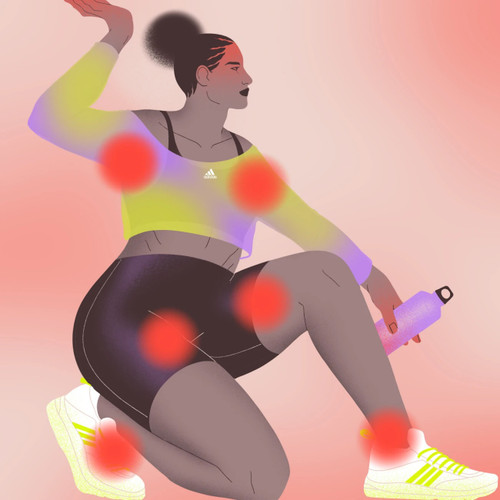How to Prevent Chafing
Posted by Jack Miller on 4th Dec 2022
Prevention is always better than cure, especially when it comes to painful chafing. Unfortunately, by the time you notice that soreness has developed, the damage is already done. Luckily, there are several things you can do that significantly reduce the chances of developing a chafed area. Take a look at our five-step guide to effectively prevent chafing.
Think ahead
Chafing is damage to the skin that's caused by repeated rubbing. The skin may rub against another piece of skin (chafing at the top of the inner thighs is an example of this), or rub on clothing. Activities such as walking, running, cycling, exercising or performing a work-related movement repeatedly are all likely to increase the risk of chafing.
Make sure that you plan ahead - if you suspect that your day is going to include some activities that put you at risk of chafing, take preventative steps. As chafe prevention is mostly based around wearing proper protection and maintaining good hygiene, it makes sense to make it a part of your daily routine.
Wear the right clothing
Clothing that doesn't fit correctly is likely to cause a chafe. Make sure that clothing isn't too loose or tight. Ideally, it should be made of a material that wicks moisture away from the body - moisture buildup due to unbreathable synthetic fabrics can greatly increase the chances of a chafe. If you know you're going to be walking, cycling or running a considerable distance, protect your upper thighs with suitable shorts - ideally worn with anti-chafing underwear. Remember to avoid shorts that end at the crease of the knee (opt for shorts that finish above or below the knee), as the hem can cause chafing in the delicate area behind the knee.
Maintain excellent hygiene
Stale sweat is a breeding ground for bacteria. This means that even if there's a slight chafe, there are plenty of bacteria present, ready to thrive on the delicate, exposed dermis. In addition, sweat dampens the skin, increasing friction and, therefore, the likelihood of chafing. Daily showering or bathing with a gentle soap is important to keep the skin in good condition.
Keep the skin dry
From preventing sweat buildup to drying carefully after bathing, keeping vulnerable skin dry is vital to prevent chafing. As already mentioned, moist skin is more affected by friction, accelerating the rate at which chafing can occur. In addition to drying thoroughly after bathing, it's also important to keep the skin dry after swimming, getting caught in the rain or any other circumstances where you come into contact with moisture.
Anti-chafing underwear or thigh chafing bands
Anti-chafing underwear, or anti-chafing bands, are arguably the most effective protection against chafing on the market. Unlike petroleum jelly or other barrier creams, anti-chafing shorts are long-lasting and avoid the mess and stickiness that a cream barrier entails. Easy to launder and offering all-day protection, anti-chafing underwear is discreet, extremely comfortable and a reliable way of stopping a chafe before it starts.
Talk to the team at No More Chafe for further information.

